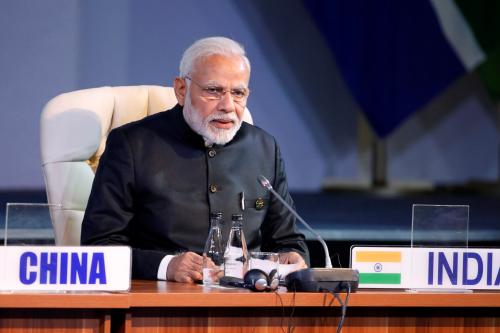

1:30 am IST - 3:00 am IST
Past Event
1:30 am - 3:00 am IST
No. 6, second floor, Dr Jose P Rizal Marg, Chanakyapuri
Delhi
110021
Content from the Brookings Institution India Center is now archived. After seven years of an impactful partnership, as of September 11, 2020, Brookings India is now the Centre for Social and Economic Progress, an independent public policy institution based in India.
By Aditya Srinivasan and Nidhi Varma
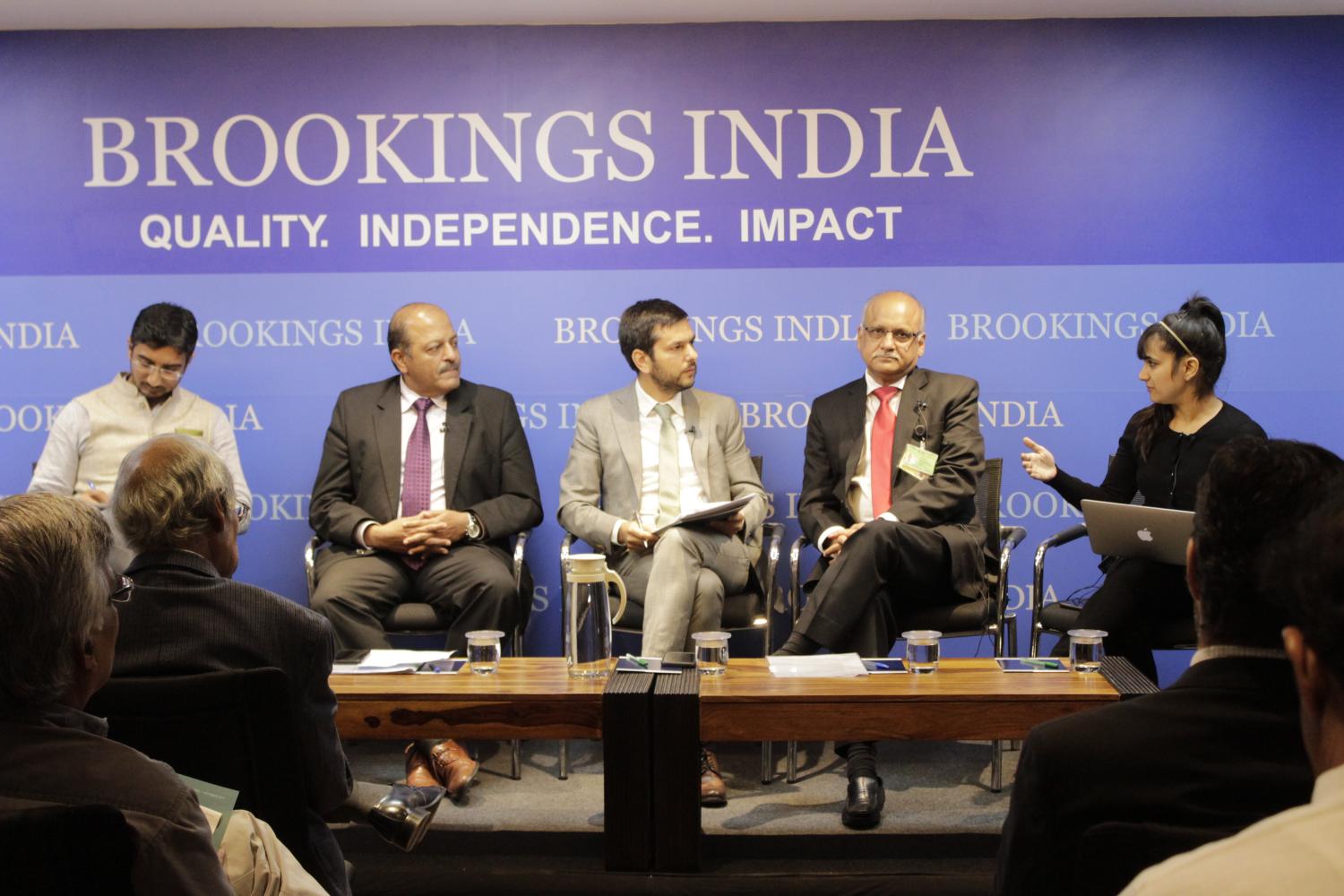
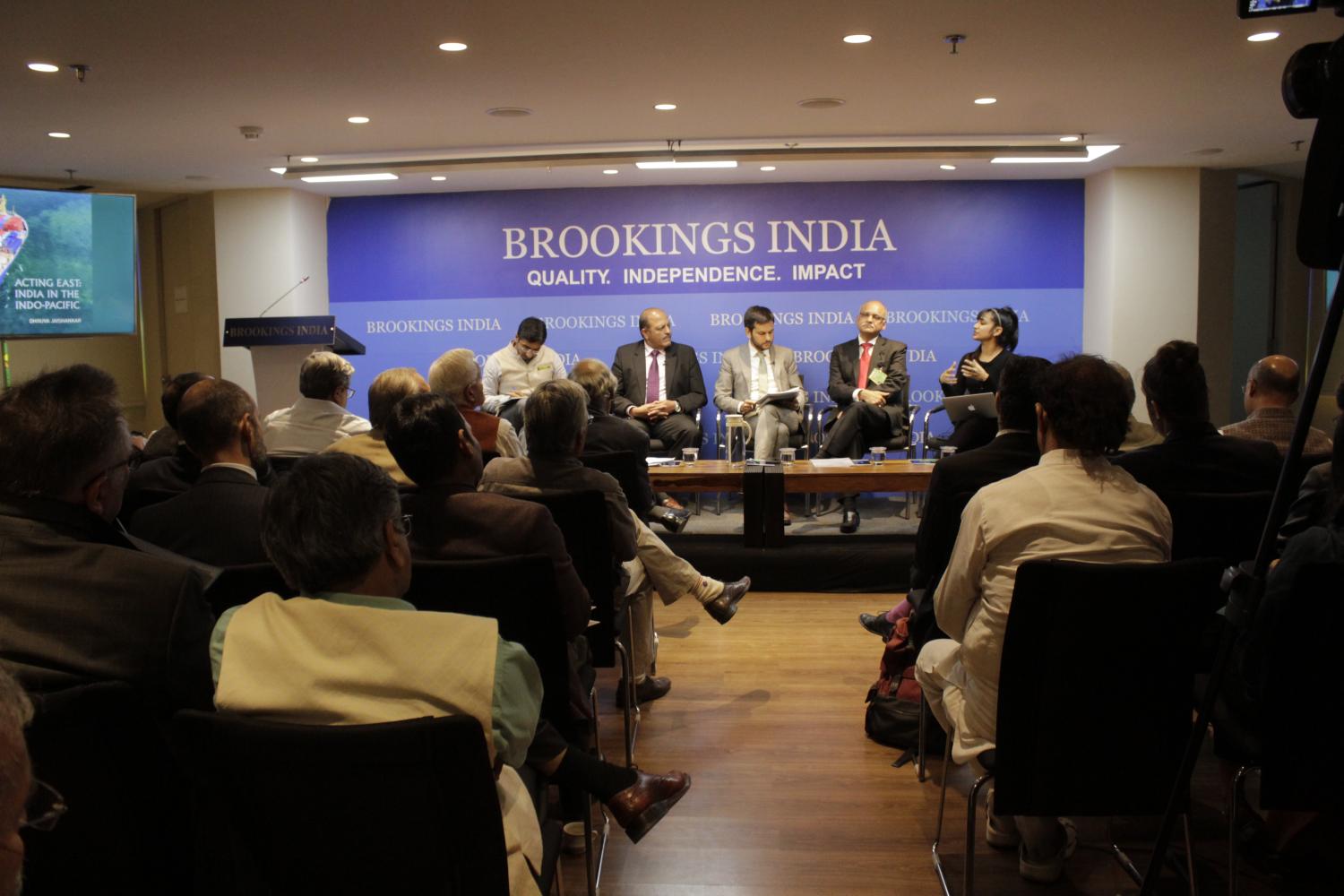
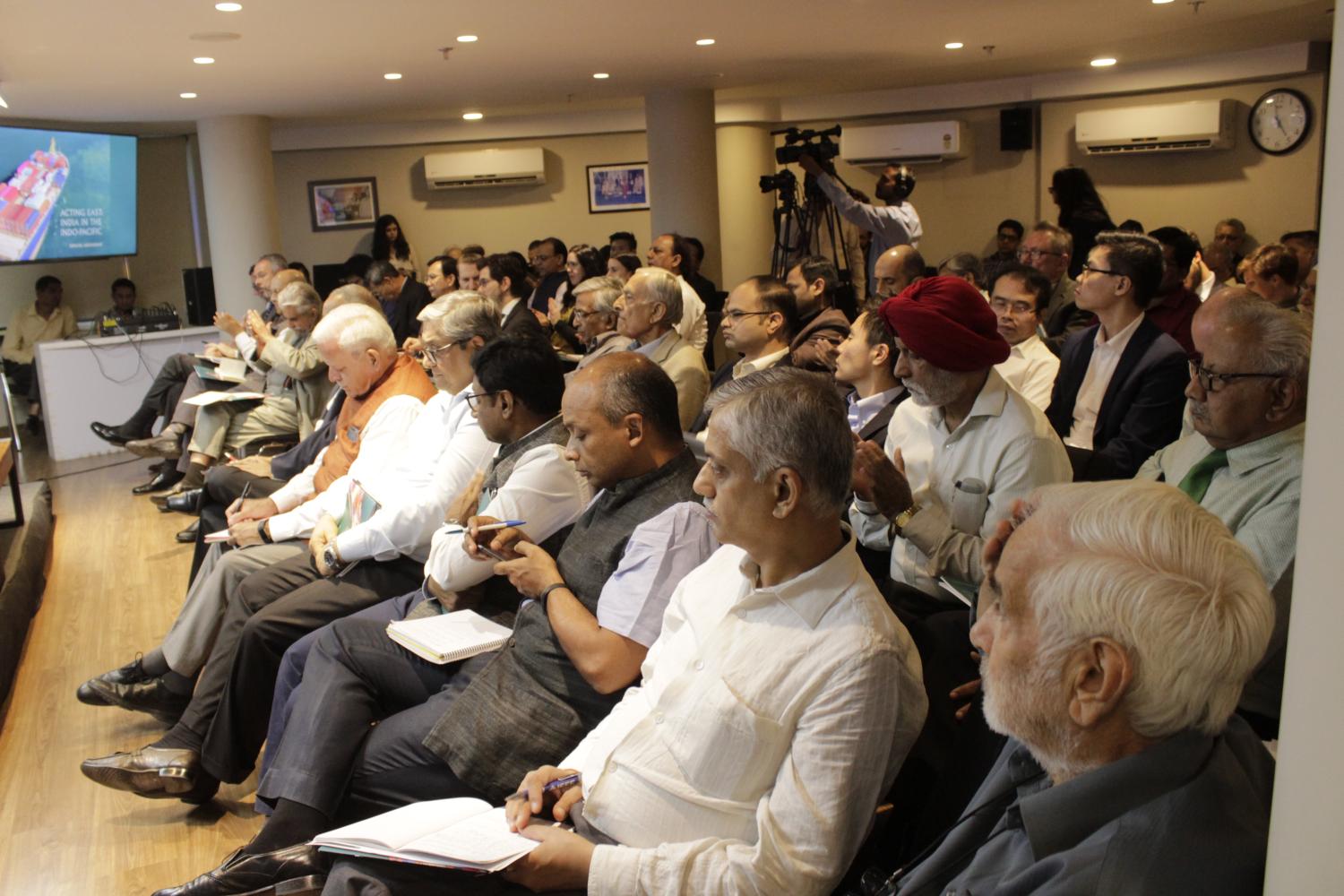
From Looking East to Acting East
Mr. Jaishankar began the discussion by outlining three key drivers behind India’s push towards ‘Act East’. First, he highlighted the rise of China and the need for India to counterbalance the former’s aggressive posturing in the region, as well as break its monopoly as a line of credit and major economic partner. Second, institutions and institutional arrangements such as ASEAN are facing the strain of cooperation in an increasingly fraught context. Third, India must leverage its own growth in capability as an economic, foreign policy and strategic actor in the region.
Beyond trade, shipping and security dialogues, this involves the creation of physical infrastructure which connects India and Southeast Asia, preferably via the corridor of Myanmar, with which India shares a physical border. Orienting eastward in a concrete way on the basis of these three factors forms the crux of the ‘Act East’ policy, differentiating it from a less proactive and tangible attempt to ‘Look East’.
The speaker concluded his presentation by discussing the four core elements of an Indo-Pacific ‘turn’. The first is to secure the Indian ocean via a series of military and non-military measures. These involve building awareness of operations and movements in the region (‘maritime domain awareness’), expanding the reach and frequency of naval operations, building infrastructure and logistical capacities, and strengthening regional institutions in order to build trust and address regional problems.
The second is an attempt to integrate with Southeast Asia. Beyond diplomatic contact and military posturing, it involves a genuine attempt to build on erstwhile deep cultural and economic connections in order to foster a closer relationship. Further, India must localise its efforts even within the region, with Mr. Jaishankar noting that ‘the “Indo” part of the Indo-Pacific will always be more important’.
The third is to deepen partnerships with balancing powers against China. Such balancers include the ‘quad’ (India, Japan, Australia and the United States), bilateral engagements with each of its members, all countries in Southeast Asia and a carefully curated relationship with Russia which, the speaker noted, despite its status as a long time ally, must be understood within the backdrop of its closing ties with China.
The fourth element of India’s Indo- pacific turn involves balancing relations with China and attempting to stabilise relations while keeping other aspects, such as border skirmishes and trade, within check. Since China is the key actor in the region, an eastward push must be carried out in conjunction with a dynamic restructuring of Sino- Indian relations.
Changing Priorities
Amb. Chinoy offered a counterpoint once the floor was opened to the panel discussion—he emphasised that India ‘can play a meaningful role in the Indo- Pacific, but that meaningful role must begin with its own region first’. Mr. Chinoy also suggested that India must better exploit its partnership with Japan, which remains India’s largest single- source investor. Doing so would automatically transfer the rewards of India’s spectacular growth story further eastward, making it a key player in the Indo-Pacific.
Gen. Narasimhan argued that the key priority for India was to better understand and counteract China’s intentions. It is only with this strategic manoeuvre that India can look to leverage its influence meaningfully and remain one strategic step ahead.
He also pointed out that a deeper engagement with the Pacific region (which goes beyond the ‘quad’) is far more likely to yield wide- ranging results. On the China angle, Gen. Narasimhan argued that countries where China is attempting to build ports and maritime facilities should seek assurances that they are not dual-use (civil and military) and will be used purely for civilian operation.
Ms. Passi argued that India’s move eastwards was not an attempt to simply replace China or forge its own dominance, but to engage multilaterally and improve connectivity within the region. Additionally, she noted, India needs to ‘operationalise’ the Indo- Pacific in a concrete way, and act on multiple fronts—strategic, economic, political and security. Without doing so, India risks losing trust in the region and missing important integration opportunities. Moving forward, India needs to self-evaluate on two fronts—what is the importance of the ‘quad’ moving forward? Furthermore, how is it to reconcile this with the Russian relationship?
Securitising the Indo-Pacific?
Dr. Xavier, following the panel discussion, posed the question of whether the Indo-Pacific was being over- securitised. Mr, Jaishankar responded that the Indo-Pacific is distinct for two reasons. Firstly, it does not include India’s dynamics with other regional actors such as Pakistan (despite its proximity) fundamentally because the latter has its own, unique relationship with India that is too different from the Indo-Pacific question to consider on the same grounds. Second, China’s rise is a core driver of India’s turn eastwards. Therefore, India is not over- securitising the region so much as it is realising its importance and now choosing to act concretely.
Mr. Chinoy, on the other hand, noted that a purely security- oriented focus forces India’s new push into a box defined by the American understanding of the region as a purely security-centric tactical space. Instead, moving out of that paradigm and shifting towards economy is essential in order to engage the ASEAN states.
The Role of Russia and the Quadrilateral
Mr. Jaishankar concluded the event by responding to a set of audience questions. Some of the key questions included ‘what role does Russia envisage moving forward?’ and ‘how can the Quad develop?’
On Russia, Mr. Jaishankar noted that a good Indo- Russian partnership to balance the China factor is crucial. Given the Russian sensitivity to nomenclature and their independent foreign policy aims, the goal should be to keep Russia engaged, sensitised and close. On the ‘quad’, he responded that it does not consist of the Indo-Pacific, and that India must move forward accounting for the size and diversity of the region. Moreover, India’s engagement with the quad must not dominate its attempts to engage more distant but relevant actors such as the EU, the UK and France.
Moderator
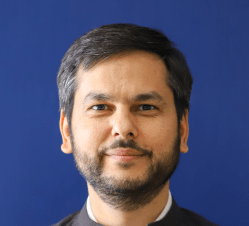

Tara Varma, Tanvi Madan
February 21, 2024
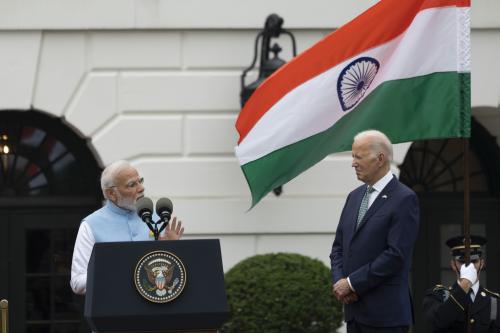
Lisa Curtis, Joshua T. White, Tanvi Madan
February 7, 2024

Ryan Hass, Tanvi Madan
January 24, 2024